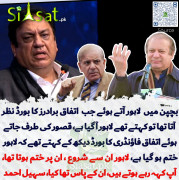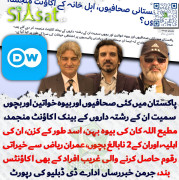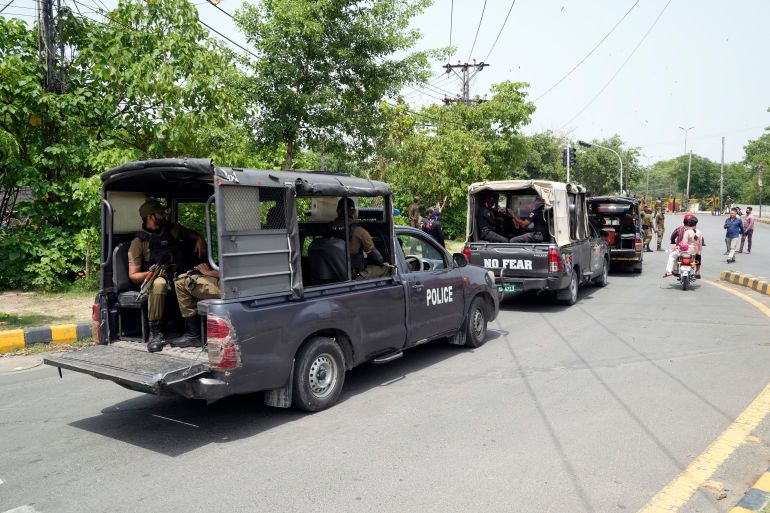Israeli History of Pashtuns:
The Pashtuns or Pathans are the world’s largest patriarchal ethnic group in existence with an estimated population of around 40 Million distributed in present day countries of Pakistan, Afghanistan, UAE, Iran, UK, USA and India with the largest population in Pakistan that is approximately 28 Million.
A lot of research has been done on the origin of Pashtuns. Taaqati-Nasiri, a book that records historical traces of Pashtuns, states that in the 7th century a people called the Bani Israel settled in Ghor, southeast of Herat, Afghanistan, and then migrated south and east. These Bani Israel references are in line with the commonly held view by Pashtuns that when the twelve tribes of Israel were dispersed the tribe of Joseph, among other Hebrew tribes, settled in the region. [8] Hence the largest tribe of Pashtuns i.e. Yousuf Zai in Pashtu translates to the ’sons of Joseph’. A similar story is told by the Iranian historian Ferishta. (9)
The Pashtuns have been living in the Afghanistan area for over 2,000 years. Their language Pashtu/Pakhto borrows widely from the Arab-ized Persian of their neighbors (now Iran), yet it was a purely spoken dialect. There was no Pakhto/Pashtu written script whatsoever, the first Pashtu book appearing about the 1500s. Hence the traditions, customs, tribal genealogy and law orally transferred from father to son. The first book on Pashtun genealogy, the Makhzan-al-Afghani was written in 1613, and contained for the first time a printed table of descent from Abraham to the Pashtun tribes, through the tribe of Binyamin or Benjamin. While the book was not accepted initially by British historians, modern historians consider it the most accurate account as compared to the other theories proposed by classical historians.
Interestingly, the word “Zionist” is created from the mountains of Jerusalem which are called “Zion”. Similarly the language of the Pathan tribesmen is called Pashtu, and its speakers call themselves Pashtun, from the Persian word “Pasht” which means “back of the mountain” so in reality Pashtun is a person who lives in the mountains. The mountains the Pathan’s have been living in after exile are called the Suleiman (Solomon) mountains. The Jews/Bani Israel from Russia also claim to be Mountain Jews and are said to be from the same exile.
The word Pathan is a Pashto written form of the original word Pithon, the great grandson of King Saul. (10)
Kashmir was under direct control of the Durrani Afghan Empire in the 1800s, and the majority of the population there were the Yousuf Zai Pashtuns who had moved eastward from Peshawar. They were living in Kashmir in great numbers, about 600,000 families who were later forcibly subdued for about 40 years by the Sikhs. (11)
Dr. Bernier, A French traveler in the frontier villages of Kashmir around the 1880’s remarked on the striking physical similarity of the locals with Jews. (12) He noted that their expressions and manners were distinguishable from the other people in this land. He finally adds that “You are not to ascribe what I say to mere fancy, the Jewish appearance of these villagers having been remarked by our Father, the Jesuit, and some other Europeans long before I visited Kashmir”.
The Jesuit Dr. Bernier points to is Dr. Joseph Wolff who says “I was wonderfully struck with the resemblance of the Youssoufszye (sons of Joseph) and the Khyberi, two of their tribes, to the Jews”. (13) Moorcroft also says of Khyberis “They are tall, and of singularly Jewish cast of features… they have been named by themselves Beni Israel, children of Israel from time immemorial.”
Bernier was also referring to George Forster who wrote in 1808 “On first seeing the Kashmirians in their own country I imagined from their garb, the cast of their countenance which was long and of a grave aspect, and the forms of their beard, that I had come among a nation of Jews”. (14)
Colonel G. Malleson of the British Army did not believe that the Afghans were Beni Israel, but commented on the issue of physical features “This no doubt has its weight”. (15)
A British army officer summed up the emotional behavior of a Pashtun:
“Even when he leaves his native heath behind he takes his manner with him. He will come down, a stalwart manly looking ruffian with frank and open manners, rather Jewish feature… He is certain to be filthy and he may be ragged, but he will saunter into a viceregal durbar (Royal court) as proud as Lucifer and with the air and manner a diplomatist might envy. Not in the least like any Indian subject.” (16)
Pashtuns follow peculiar customs like:
1. “Passover Practice” of sacrificing an animal and smearing the doorway to avert death and calamity
2. Placing the sins of the people upon a heifer or goat which is driven out in the wilderness in the manner of the biblical scapegoat
3. Stoning to death of blasphemers
4. Periodical distribution of land by lot (17)
5. The rites of circumcision and purification
These were all given in the Book of Leviticus of the Bani Israel, and modern Muslim historians like Dr. Azmat Hayat Khan accept them as indicators, if not proof of their Israelite heritage. [18] They are the only tribes in the area to practice all of these customs, as the ancient Bani Israel did 2,300 years ago.
Likewise, if anyone travels in the local bus transport of the Pakistani Pashtun areas, he or she would see fascinating art works in their buses but strikingly all these art works have Israelite origin, these peculiar diagrams include:
1. Peacocks (Torah was written with peacock feathers)
2. The Symbolic ark
3. The Mogen David or the Star of the David – also found in the Israeli flag
4. Tree of Life of Kaballah
5. Fish of the Sabbat/Shabbos
6. The heart shape lamp of the Sabbat
7. Number of Leaf petals signifying Kaballah practices.
Similarly many Hebrew inspired names of people, tribes and places are commonly found in Pashtuns and Pashtun areas of Pakistan/Afghanistan. Some tribes with visible similarities with Hebrew names are:
1. Yousuf Zai – Sons of Joseph
2. Gadoon – Gad
3. Rabbani – Reuben
4. Abdali or Naftali – Naphtali
5. Shinwari – Simeon
6. Zamand – Zebulun
7. Levani – Levi
8. Afridi & Afandi – Ephraim
9. Pathan – Pithon
The popular places that trace their origin in Hebrew are:
- Koh-e-Suleiman – Solomon Mountains
– Takht-e-Suleiman – Throne of Solomon (the highest peak in Solomon mountains)
– Afghanistan – Afghana (the grandson of King Saul)
– Kohat – a town in NWFP, Pakistan, means assembly in Hebrew and it is also the name of the second son of Levi and father of Amram.
– Zabul – A province in present day Afghanistan, in the days of Mahmood Ghaznavid the whole region of Afghanistan was known as Zabulistan – Zebulun was one of the sons of Prophet Jacob (AS).
– Khyber – A Jew Fort in Arab in the time of Prophet Muhammad (SAW) and a place on Pakistan/Afghanistan border.
– Peshawar – The Capital of NWFP province of Pakistan – PESH means the Pass and HAWAR means City i.e. The City after the Pass. Peshawar is a short drive from Khyber Pass. A Place named Habor is mentioned in Torah as the place of the exile of the tribes.
– Gozan – The historical name of Amu River in Afghanistan, hence the Torah says: “The God of Israel stirred up the spirit of Pul King of Assyria, and the spirit of Tilgath Pilnesser King of Assyria, and he carried them away, even the Ruebenites, and the Gadites, and the half tribe of Manasseh, and brought to Halah, and Habor, and Hara and to the river of Gozan to this day.” (Kings II, 17 and 18; Chronicles 1:5)
– Kerak – A City in Jordan and another in NWFP, Pakistan
– Lugar – A province in Afghanistan and a Jewish family name; the famous wrestler Lex Lugar.
– Kabul – in Hebrew Cab means dirty and Bul means city hence a dirty city
– Herat – The pearl of Khurasan – a city in Afghanistan, Hara is one of the places of the exile along with Habor and Gozan i.e. Peshawar and Amu River.
– Kash/Kish – name of numerous personalities in Chronicles of Hebrew Bible – and there is a Dasht-e-Kash north of Helmund, a City of Kash mentioned in map of Afghanistan 1912 of the Library of Congress, USA. There is also a mountain range named Hindu-Kush in Afghanistan/Pakistan and Kash Rod in Nimroz Province of Afghanistan.
– Dasht-e-Yahoodi – or the Jewish Plain – a famous place in Mardan district of NWFP, Pakistan.
– Killa Yahoodi – or Jewish town – a place on Afghanistan border of Pakistan.






































